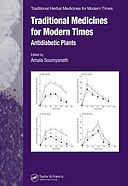Traditional Cree medicines modulate steatosis and antioxidant activity, but not insulin sensitivity in fat-laden H4IIE liver cells
A. Afshar, P.L. Owen, L. Martineau, T. Johns, J.T. Arnason, P.S. Haddad
Revista de Fitoterapia 10 (Suppl. 1) p. 145 (2010)
The Canadian Institute of Health Research Team in Aboriginal Antidiabetic Medicines is evaluating the potential of traditional Cree medicinal plants to develop culturally acceptable strategies to reduce the burden of type 2 diabetes.
Non-alcoholic fatty liver can cause or exacerbate insulin resistance. Reducing fat accumulation in the liver and preventing rises in
oxidative stress and insulin resistance can improve T2D and alleviate some complications.
Eight antidiabetic plants used by the Cree are evaluated for their efficacy to reduce fat deposition, restore insulin sensitivity, and enhance antioxidant activity in fat-laden liver cells.
Normal and fatty H4IIE hepatocytes were incubated with maximal nontoxic concentrations of plant crude ethanol extracts for 16 hours. Intracellular triglyceride levels were assessed using AdipoRed. Generation of reactive oxygen species was determined with dichlorofluorescein diacetate. Stimulation of the insulin pathway was determined by measuring Akt phosphorylation using an ELISA kit. Appropriate positive and negative controls were also tested.
More than 60% of tested extracts significantly reduced intracellular triglyceride deposition compared to nontreated cells. Most (87%) prevented an increase in ROS production in fat-laden cells. However, no effect on Akt phosphorylation was observed. Our model suggests that Cree herbal medicines may be effective in reducing the oxidative stress associated with diabetic steatosis without having an effect on insulin sensitivity.





